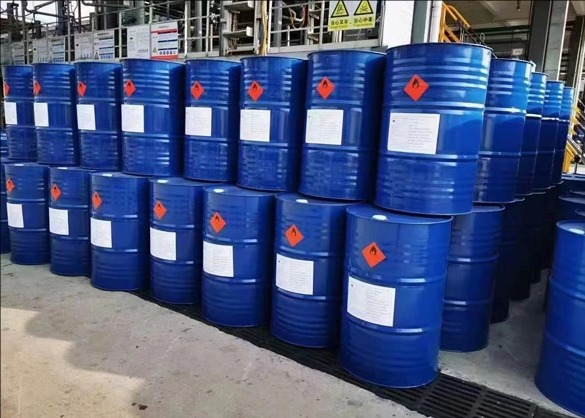Ethyl Acetate (EAC)

제품 설명
Ethyl Acetate (EAC)
Ethyl Acetate, also know as acetic ester, is an organic compound with the chemical formula C4H8O2. It is a kind of ester with functional group-Coor (double bond between carbon and oxygen). It can be used for common c4h8o2 ester reactions such as alcoholysis, amolysis, transesterification, reduction, etc. It is mainly used as solvent, edible flavor, cleaning agent. HS CODE: 29153100
Features of Ethyl Acetate (EAC Chemical)
Ethyl acetate exhibits the following features:
Pleasant fruity odor: Molar mass ethyl acetate has a unique sweet fruity aroma, making it widely favored in various applications.
Volatility: Ethyl acetate is a volatile liquid that easily evaporates at room temperature, making it an ideal eac solvent in various industrial and laboratory applications.
Solvency: Ethyl acetate has excellent solvent properties and can dissolve various substances, including resins, oils, cellulose derivatives, and many synthetic polymers.
Low toxicity: Compared to many other organic solvents, ethyl acetate has lower toxicity, making it safer to handle and use.
Flammability: Ethyl acetate exhibits some flammability and should be handled with caution in the presence of ignition sources.
Biodegradability: Ethyl acetate can be biodegraded by microorganisms, reducing its environmental impact.
In summary, ethyl acetate possesses multiple advantageous properties and finds widespread applications in industries such as coatings, paints, adhesives, pharmaceuticals, and food processing.
Ethyl Acetate (EAC) Properties
CAS # EC Number Hill Formula Chemical Formula Molar Mass
141-78-6 205-500-4 C4H8O2 CH3COOC2H5 88.11 g/mol
Description
Synonyms Ethyl acetate, Ethyl ethanoate, Acetic ester, Ethyl ester
Ethyl Acetate Abbreviation EAC
Product Information
CAS number 141-78-6
EC index number 607-022-00-5
EC number 205-500-4
Hill Formula C4H8O2
Chemical formula CH3COOC2H5
Molar Mass 88.11 g/mol
HS Code 29153100
Molecular Structure
Physicochemical Information
Boiling point 77 °C (1013 hPa)
Density 0.90 g/cm3 (20 °C)
(d 20 °C/ 4 °C)
Explosion limit 2.1 - 11.5 %(V)
Flash point -4 °C
Ignition temperature 460 °C
Melting Point -83 °C
Vapor pressure 97 hPa (20 °C)
Solubility 85.3 g/l
Package of Ethyl Acetate (EAC)
For the package, Ethyl Acetate (EAC) is available in drum and isotank. The drum contains 180kg, and the container load for 20FCL is 14.4tons, 40FCL is 24.48tons with pallet and 25.2tons without pallet. The isotank contains 20-21MT.
Storage Caution of Ethyl Acetate (EAC)
Due to its flammability and volatility, Ethyl Acetate (EAC) may ignite and cause fires or explosions when exposed to high temperatures or ignition sources. Therefore, protective measures should be taken when storing and delivering ethyl acetate:
Ethyl Acetate (EAC) is Class 1 flammable substances and should be stored in a cool, ventilated place, away from sources of ignition.
Measures should be taken to prevent static electricity. During loading and unloading, handle with care to prevent damage to packaging and containers and to prevent the accumulation of static electricity.
The product should be stored in a cool, ventilated warehouse with a temperature not exceeding 30°C, and should be protected from direct sunlight. Containers should be kept tightly closed. Store separately from oxidants, acids, and alkalis.
The workplace should be well ventilated, and personnel should wear protective equipment.
Applications of Ethyl Acetate (EAC)
Ethyl Acetate (EAC) has a wide range of applications across various industries due to its versatile properties. Some common applications of ethyl acetate include:
Solvent: Ethyl acetate is primarily used as Ethyl Acetate Solvent in the production of paints, coatings, adhesives, varnishes, and inks. Its strong solvency power makes it effective in dissolving various resins, polymers, and organic compounds.

